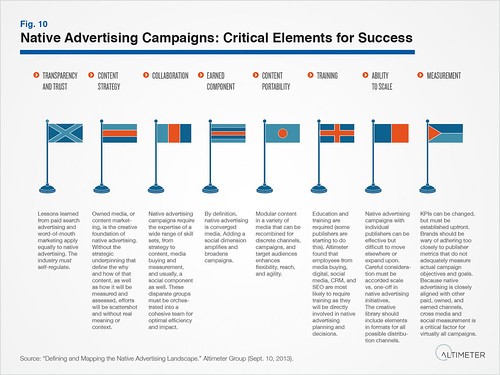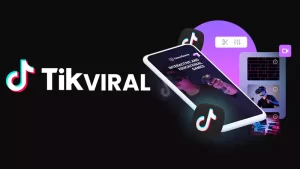Traditional forms of digital advertising, such as banner ads, are becoming increasingly ineffective at reaching and engaging consumers. Click-through rates for banner ads are at an all-time low of less than 1%. In fact, surveys show that a consumer is 279.64 times more likely to climb Mt. Everest and reach its summit than they are to click on a banner. In comes native advertising, which is a new form of advertising that seamlessly blends in with the organic content of a publisher’s site. In this article, we discuss the different types of content that can be used in native advertising.
Videos

Image via Flickr by Altimeter, a Prophet Company
Native video advertising is a rapidly growing segment, and brands are increasingly spending significant percentages of their digital advertising budgets on this type of content. Online viewers find videos appealing since it’s a visual medium and often tells a story. Instead of adding a URL link to your videos on social media sites, you directly upload a native video to a social media platform’s feed. Since the user doesn’t need to click on links to access the video, their browsing experience is not being interrupted.
However, for native videos to be effective, they need to seamlessly blend in with the existing content on a site. That is, users need to feel that your marketing content ads value to their browsing experience and that it’s relevant within the context of the site. To ensure that your native video is not disruptive, keep them muted or make them click-to-play.
Articles
You can also use articles for native advertising. In fact, they’re quite similar to advertorials. Advertorials have been around for many decades, and are basically advertisements that look like typical articles on a publisher’s site. The content of these advertorials is shaped around the product or service that’s being advertised. Native advertisements are basically advertorials that have been given a bit of a facelift.
One of the distinguishing factors between the two forms of advertising, though, is that native advertisements are specifically designed to not come across as advertisements at all. Also, whereas advertorials can appear in multiple publications, native advertisements are placed on one publication platform only. A publisher such as BuzzFeed, for instance, works closely together with brands to create content that’s suitable for their platform. These articles are not published anywhere else.
Infographics
Infographics are another popular type of content in native advertising. As is the case with other content forms, when you’re using infographics as part of a native advertising campaign, you need to ensure that they blend in seamlessly with the other content on a publisher’s site.
Like videos, infographics are highly visual, which makes for increased user engagement. Infographics also lend themselves to storytelling, which enables brands to engage users on a more emotional level. Since infographics can also contain animated elements, which drive even more user engagement, they provide a cheap alternative for smaller businesses to the production of videos. In addition, infographics are easily shareable, which means that brands are able to reach a wider audience.
Native advertising works because readers don’t view it as advertising but rather as entertaining and informative content. This means that instead of focusing on your products, you must aim to tell a story, educate, and entertain.


















Be First to Comment